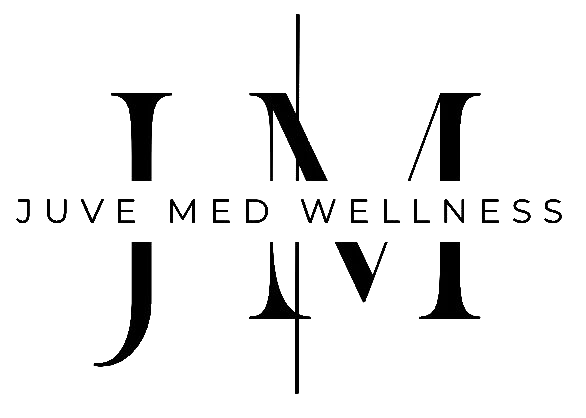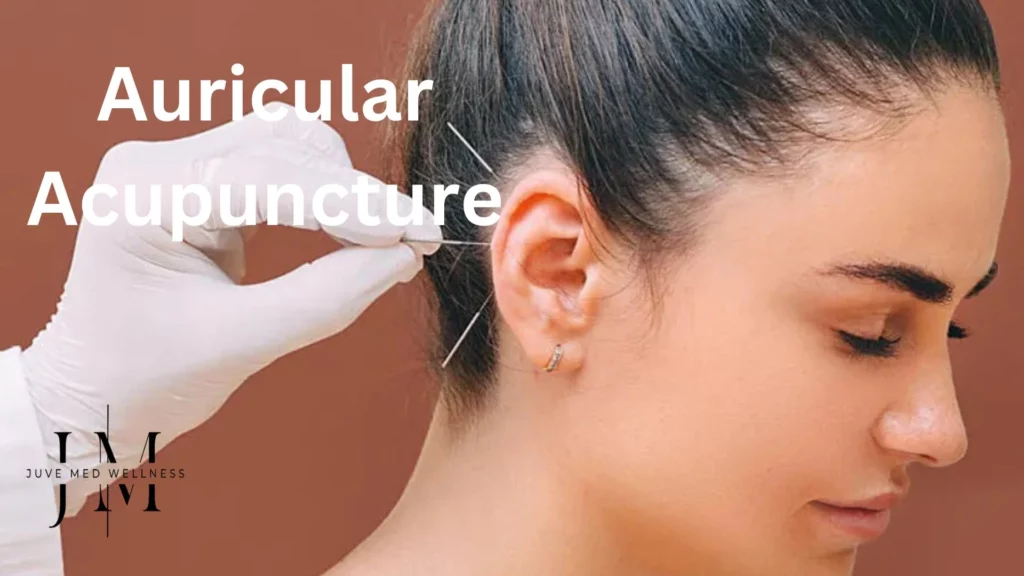Auricular acupuncture is ancient practice with modern benefits
You might be surprised to find out it’s not just A-listers like Penélope Cruz, Jennifer Aniston or Robert Downey Jr who swear by auricular acupuncture. This ancient practice is indeed far more than a Hollywood trend. It’s a timeless therapy that has been used by people across cultures to address a multitude of health issues. From chronic pain to mental health support, auricular acupuncture (or ear acupuncture) has been a secret among those who seek balance and wellness – and now it’s being discovered by a whole new generation.
With a history of over 2,500 years, auricular acupuncture, also known as auriculotherapy, is an ancient technique rooted in Traditional Chinese Medicine (TCM). This involves stimulating specific ear spots, each one said to represent a different organ or system in the body. Think of the ear as a “microsystem”, a mini map of the whole body, with each point signifying and relating to a certain physiological function, such as the respiratory, digestive or even emotional systems.
According to TCM, “Qi” (pronounced “chee”) is the life force or energy that flows through the body and is the basis of auricular acupuncture. By focusing on specific ear spots, practitioners aim to bring the body’s Qi back into balance and harmony, supporting the body’s natural healing processes and overall wellbeing.
Moreover, auricular acupuncture has its roots in traditional Chinese medicine but French neurologist Dr. Paul Nogier made important advancements in its modern use in the 1950s. The ear acupuncture points were mapped out by Dr. Nogier and he created a graphic of an “inverted fetus”. The Nogier Ear Acupuncture method is still a crucial part of modern auricular acupuncture worldwide.
What’s more, auricular acupressure, also known as ear seeding, is a non-invasive alternative to traditional needle-based acupuncture that has become more popular in recent years. The rise of digital platforms like TikTok, for instance, has made this ancient technique more accessible to a modern audience is partly responsible for this surge in interest. Ear seeding is an easy and gentle way to get started with auricular therapy.
The Procedure: A Closer Look
Auricular acupuncture starts with a full assessment of the patient’s condition and symptoms. There are over 200 acupuncture points in the ear and each one has a specific relationship to the body. Based on the patient’s unique needs and medical history, the trained acupuncturist carefully selects the most relevant points.
Hygiene is important for needle-based acupuncture. Before starting, the acupuncturist will clean the ear area. The chosen points are then pierced with sterile, extremely thin needles. These needles are so thin they usually cause very little discomfort; upon insertion patients may only feel a slight pressure or a brief, momentary sting.
An alternative to using needles is ear seeding, also known as auricular acupressure. Small seeds, beads or even tiny magnetic devices are placed on the targeted ear points instead of needles. These gadgets can be gently squeezed or massaged throughout the day to stimulate the corresponding body parts.
While needle acupuncture provides immediate stimulation to the acupuncture points (See this content on acupressure points), ear seeding offers the advantage of continuous, gentle pressure. This makes ear seeding particularly well-suited for at-home care, allowing individuals to extend the therapeutic benefits beyond the treatment room. It’s especially appealing option for those who prefer a less invasive approach to acupuncture.
Benefits and Advantages of Auricular Acupuncture
Auricular acupuncture, an ear focused form of acupuncture in Newport beach, has many benefits. It’s a safe and effective way to address many conditions from pain management to mental health support:
- Pain Relief
Auricular acupuncture is an effective solution for both acute and chronic pain (1, 2). In fact, it’s effective for many types of pain including:
- Back pain: Whether it’s from an injury or a chronic condition like sciatica, auricular acupuncture can help with discomfort and mobility.
- Arthritis: By reducing inflammation and increasing blood flow it can ease the pain and has an analgesic effect on arthritis (3).
- Migraines: Auricular acupuncture can reduce the frequency and intensity of migraine headaches by addressing imbalances (4).
- Cancer pain: It’s a natural and complementary way to manage cancer pain, reducing the need for strong meds (5).
- Post-operative pain: Studies show auricular acupuncture can be effective in reducing pain after surgery, resulting in faster recovery times (6, 7, 8).
The mechanism behind this pain relief is the stimulation of ear points which releases endorphins, the body’s natural painkillers. Consequently, it provides a natural alternative to relying on opioids for pain management.
- Mental Health Support
Auricular acupuncture as an auricular therapy is being recognized for its benefits to mental health. It can be useful for:
- Stress and Anxiety: By calming the nervous system and relaxing (9), auricular acupuncture reduces stress hormones and anxiety symptoms (10).
- Depression: It can improve mood, increase energy and balance for those with depression.
- PTSD: Auricular acupuncture can help process trauma and manage symptoms like flashbacks and nightmares.
- Insomnia: By relaxing and regulating sleep cycles it can improve sleep quality and duration (11, 12).
In addition to this, it can also help with:
- Hypertension: It can be used alongside traditional medication to lower blood pressure (13).
- Mental Clarity: Many people report improved focus, concentration and cognitive function after auricular acupuncture treatments.
- Addiction Recovery:
Auricular acupuncture has shown to be effective in supporting addiction recovery. It can help with:
- Cravings: By stimulating certain points on the ear, it can reduce the intensity of cravings for substances like nicotine and opioids (14).
- Withdrawal Symptoms: It can help with withdrawal symptoms making detox more manageable.
This is because auricular acupuncture rebalances the nervous system which is often imbalanced during addiction. This rebalancing brings calm and well-being, therefore, making it easier to navigate recovery.
- Cancer Treatment Support
For individuals undergoing cancer treatment, auricular acupuncture can provide much-needed relief from common side effects (15):
- Nausea and Vomiting: It can help reduce nausea and vomiting associated with chemotherapy and radiation.
- Fatigue: Auricular acupuncture can help boost energy levels and combat the fatigue that often accompanies cancer treatment.
- Insomnia: It can promote better sleep, allowing patients to rest and recover more effectively.
By addressing these side effects, auricular acupuncture contributes to an improved quality of life during a challenging time.
Table 1- Important information about auricular acupuncture
- Holistic Health Benefits
Beyond specific conditions, auricular acupuncture offers numerous benefits for overall health and wellness. And as part of the growing movement of holistic medicine in Newport Beach, auricular acupuncture focuses on treating the body as a whole, balancing the physical, emotional, and mental aspects of health.
It can help with:
- Digestive Health: It can help regulate digestion, alleviate symptoms like bloating and constipation, and improve gut health.
- Reproductive Health: Auricular acupuncture can be used to address menstrual irregularities, menopausal symptoms, and as an effective acupuncture for fertility.
- Immune System Support: It can strengthen the immune system, making the body more resilient to illness.
- Hormonal Balance: By stimulating specific points on the ear, it can help regulate hormone production and address imbalances.
Non-invasive Options
For those who prefer non-needle approaches, there are non-invasive options available:
- Ear Seeding: This involves placing small seeds or pellets on specific points on the ear using adhesive tape. The seeds are then stimulated by applying pressure throughout the day.
- Auricular Acupressure: This technique involves applying pressure to specific points on the ear using fingers or a massage tool.
These non-invasive methods offer similar benefits to needle-based acupuncture, including pain relief, stress reduction (9), and digestive support. While more research is needed, some studies suggest that ear seeding and acupressure may also assist with weight loss (See this post on acupuncture for weight loss) when combined with other lifestyle interventions. For example, extended acupressure including the use of spheres or natural, non-toxic seeds has clinical benefits without the risks of embedded needles (16).
Is there any side-effects for auricular acupuncture?
Auricular acupuncture is generally safe with few side effects. The most common are mild dizziness (1), slight bruising (1) or temporary discomfort at the needle sites. These effects are usually short lived and subside quickly.
Ear seeding being a non-invasive technique has even fewer risks but improper application can cause skin irritation or overstimulation which can cause dizziness or fatigue. For that reason, it is important to consult a licensed practitioner to ensure proper technique and avoid complications
Some people like those with pregnancy, pacemakers or a history of seizures should consult their doctor before undergoing auricular acupuncture to ensure safety.
Recovery and Aftercare of ear acupuncture
After an auricular acupuncture in Newport beach at Juvemedwellness, most people feel relaxed and calm and can go back to their daily activities immediately. It is recommended to stay hydrated and rest to allow the body to continue the healing process. Mild dizziness or discomfort at the needle sites is uncommon but may occur; these sensations usually subside after the session. Nonetheless, most people feel the benefits almost immediately.
No downtime is required for ear seeding. Patients can continue to apply gentle pressure to the seeds to enhance the benefits. Those having professional treatments should follow any aftercare advice from their acupuncturist which may be to avoid excessive pressure or over stimulation of the ear.
For chronic or complex conditions multiple sessions may be required for best results. The treatment schedule will be tailored to your needs and continuous use of ear seeds at home can provide ongoing relief between treatments.
In summary auricular acupuncture and ear seeding are holistic therapies that can address physical, emotional and mental health issues. Whether traditional needle-based acupuncture or modern non-invasive methods these treatments are natural solutions to improve the overall well-being of individuals.
References:
1- https://www.healthline.com/health/ear-acupuncture
2- https://www.sciencedirect.com/science/article/abs/pii/S1524904220301685
3- https://academic.oup.com/qjmed/article/115/8/525/6360474
4- https://pubmed.ncbi.nlm.nih.gov/38696035/
5- https://onlinelibrary.wiley.com/doi/10.1155/2020/1618767
6- https://www.tandfonline.com/doi/full/10.1080/00325481.2024.2333232
7- https://link.springer.com/article/10.1007/s12663-024-02431-x
8- https://link.springer.com/article/10.1007/s10006-023-01140-y
9- https://www.yorkhospitals.nhs.uk/seecmsfile/?id=7779
10-https://onlinelibrary.wiley.com/doi/10.1155/2015/495684
11-https://pmc.ncbi.nlm.nih.gov/articles/PMC6205765/
12-https://www.mdpi.com/2072-6694/13/16/4082
13-https://academic.oup.com/eurjcn/article/19/1/20/5975047
14-https://www.tandfonline.com/doi/full/10.1080/10550887.2021.2016011
15-https://onlinelibrary.wiley.com/doi/10.1155/2020/1618767
16-https://academic.oup.com/painmedicine/article/21/6/1276/5840965

